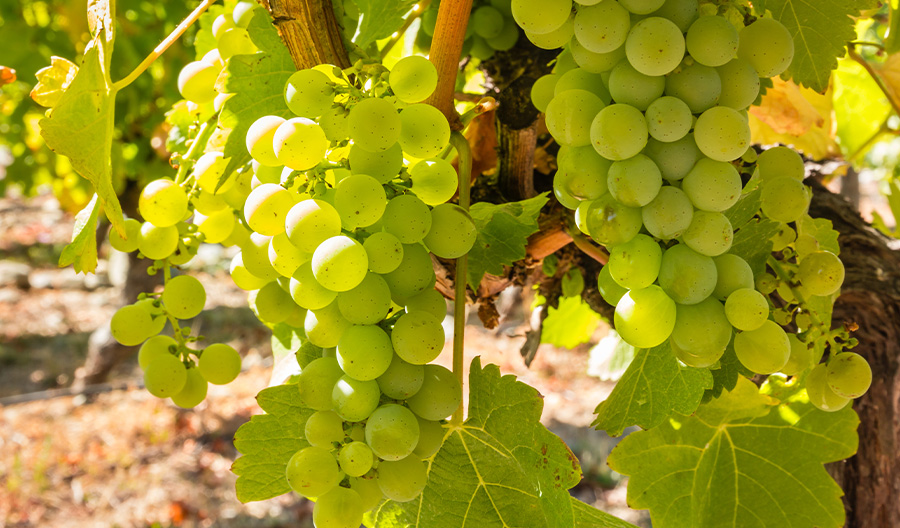Do you like the pear-fruited notes of Pinot Grigio, but long for something more substantial, generous and even weighty? Switch languages and head north to France’s Alsace wine region, where Italian grigio changes into French gris, and the light and easygoing wine you know becomes rich and full-bodied.
While Pinot Grigio and Pinot Gris are indeed the same grape, different growing conditions have a significant impact on the resulting wines. In northeastern France, the climate is dry and sunny. During extended autumns, the variety attains rich flavors due to full aromatic development, achieved particularly well in south- and southeast-facing vineyards that run along the eastern slopes of the Vosges. Botrytis, or noble rot, is also a distinct possibility.
A mutation within the Pinot family, Pinot Gris is a sibling of Pinot Noir and Pinot Blanc. Its grapes are neither white nor black, but exhibit more of a pinkish-gray skin color (hence the gris and grigio, which both translate to “gray”).
The variety has been present in Alsace since at least the 16th century, and it’s been made in dry, off-dry and sweet styles, which run the whole gamut of flavors: floral and fruit-scented, flinty and smoky, spicy and honeyed. This is still the case, and winemakers revel in the possibilities. Here’s a stylistic primer to the wonderfully gray world of Gris.

Fresh, concentrated and dry
One of the aspects that gives Alsace Pinot Gris such substance and character, even if the style is dry and fruit-driven, is restricted yields. Many winemakers focus on a clean-cut, dry style that’s suited to contemporary cuisine, but this requires hawk-like attention to harvest date and selection.
In the past, Grand Cru Alsace Pinot Gris was usually made in an off-dry or sweet style, but today, it is possible to make it in a dry style. Low yields from stony vineyards ensure the wine is concentrated, while prime sites with well-drained soils further promote ripening before too much sugar develops in the grapes.
What is important for this style of Pinot Gris, is precision in when you go to harvest. Pinot Gris can gain one degree of alcohol within a day and lose acidity quickly. Since balance is paramount, giving full attention to the fruit and employing responsive logistics are key.
Alsace Pinot Gris is very earthy. The crucial decision of when to harvest is key to balance the grape’s inherent roundness and ability to make powerful wines.
This creates great pairing versatility for dry Pinot Gris. Generally it pairs best with white meats or grilled fish. A more specific pairing would be bouchées à la reine, little puff-pastry shells filled with a meat ragout (often chicken, veal and ham), mushrooms and sweetbreads in a creamy sauce.

